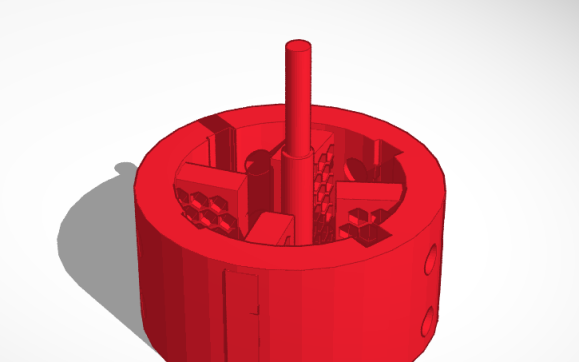The clash between Intellectual Property and cheap, distributed, additive manufacturing is both inevitable and predictable. It’s one of those deciding battles where regardless of the outcome, the world is different afterwards for better or worse.
The conflict is obvious – Patents and Copyright are about protecting ideas, while the line of development Manufacturing is following demands these ideas be created, shared, improved upon ad infinitum. Trademarks aren’t really included, since that’s about brand identity.
Within the next few years this issue will come to the forefront, with conventional design/manufacturing firms screaming that their sales are falling due to rampant production of unlicensed/open sourced (reverse-engineered) “stuff”. Something comparable to “pirated” IPhone 3GS being for sale at your local flea market (and online equivilents) for 1/4th the price Apple charges for it, and you watch them print it (electronics, antennae, screen and all) while you wait.
Imagine the panic of investment banks, interested parties & governments around the world. The old system isn’t protecting our property! It’s all because of this rapid prototyping technology some idiot made cheap and pervasive – Now anybody can make whatever they want, or more importantly steal something you paid/worked/licensed to develop without giving you a dime for your trouble. We’ll be ruined. Something must be done.
There are two broad ways this can dealt with: Prohibition or Renaissance
If we wait, the knee-jerk reaction will be Prohibition – IP Laws will pretty much stay the same, while a new government agency will be introduced to regulate “@home manufacturing businesses”. It will probably take the form of a licensing scheme, where in order to own & operate a “@home manufacturing unit” you need to take a class on intellectual property, pay some fees for a license from the government, and put your identification number on every item that comes out, making your machine and thus you responsible for it.
The Good News: It probably guarantees some minimum level of proficiency operating the machinery if there is a class associated with the licensing requirement. If a product is pirated, defective or fraudulent it’s easy to find out who to punish.
The Bad News: By requiring a license, they’ll make the majority of hobbyists and tinkerers into outlaws and black-market participants by default. For those who do participate in the licensing scheme, they will have the advantage of fewer competitors, but since every product produced can always be tied back to their machine it introduces a whole slew of liability issues that haven’t even been considered yet.
When it comes to piracy, the assumption is every act is intentional – But how many ideas are there? How many designs? Additive Manufaturing makes the entire design process “Think it up, design or scan it, create it on-site” so where does the “research to make sure you’re not conflicting with anyone elses existing intellectual property” step come into play, before or after you hit the print button? Additive manufacturing is so important because it shrinks the minimum viable market size to one consumer. Is it the @home manufacturers responsibility to research every single design they are asked to print? Probably.
IP liability insurance will be mandatory, inadvertent violations frequent and payouts punitive in the stated hopes of discouraging similar behavior. But you can’t discourage creation once the potential of the tools are realized. It’ll be easy to get one of these self-replicating machines, but expensive to get a license. And so the blackmarket will flourish with the inevitable criminality that accompanies. The costs of prohibition are already stacking up, and we won’t even address enforcement here, but it doesn’t have to be this way.
A Collaborative Renaissance: Everything Old is New Again
Patents exist for a reason, innovation is not free or even cheap. But who says the way we’re doing it now works very well at all? Large producing firms defensively acquire patents as leverage in the event they are sued by a competitor, so-called “patent trolls” buy patents like lottery tickets while wielding the letter of the law as a thief would a gun; extorting value they did not earn while leaving their victims shaken and thankful more was not taken from them. The individual inventor is in there somewhere, but with the process to patent a single idea requiring multiple years and thousands of dollars (not including legal costs), what average individual has the time to create ideas and protect them all using only his own resources? Not many.
Lincoln said “The Patent System added the fuel of interest to the fire of genius.”, and it did. But over the intervening decades the creosote of bureaucracy and abuse has slowly choked what was once a vital part of American free market innovation. I propose we take it back.
If you have a great, profitable idea and you patent it under the current system – That’s great! But how do you make money with it? You could sell it (if someone wants to buy it, ideas are cheap) If you want to bring it to market yourself, you’ll have to find a manufacturer, financing, packaging, marketing, distribution, and on and on. Most patents are improvements to existing products, so what happens if someone improves your patented idea and patents it themselves? Not only is your old system obsolete, but if you want to upgrade to the newly developed “state of the art” there are very expensive licensing fees or redudant development costs while you re-invent their re-invention of your technology. Talk about wasting time and effort.
Instead, why not take advantage of the advantage of our digital world – Combine the concept of Thingiverse’s collaboration & attribution with free value transfer services like Bitcoin with Ricardian contracts sprinkled in there to automate the whole thing. This combination of attributes can uniquely eliminate the involvement of what some refer to as “the parasite class“.
The trick is to design the system in such a way so you can have a single object purchased provide value to everyone along the path of its creation. Initially these relationships will be simple but as the virtuous cycle kicks in things get complicated. There would be a small submission fee to make sure people bring in designs that are at least a little thought through, say $10. If someone wants to examine your design in detail, it might cost $.50, if they want to print it, or modify it: $1. Prices need to be low to encourage experimentation with existing designs. In that $1 for a use license, at least 50% should always go to the current creator with payments scaling down to earlier creators, but never ceasing to exist entirely. With Bitcoin and a project called OpenTransactions, you can transfer values as low as .00000001 bitcoin instantly to anyone else with no transaction fees, automatically, with execution based on the fulfilment of pre-determined conditions.

Put simply, if I invent a innovative new doorstopper and upload it to this service, and then you came along and wanted to print it, you would take the other side of that contract and in exchange for $1 sent to an automatically generated bitcoin address, you would be sent the file and granted a license to print or modify under the condition that you make any improvements available under the same type of licensing conditions.
As the content creator, I only make and sign this contract once and then just put it out there for as many people to take me up on it as like my product. This remains just as true if my doorstopper is the 5th generation of novel improvement on that doorstopper, except there the $1 once sent to the generated bitcoin address would be split up and distributed to all the contributors based on some algorithm.
For-Profit Open Source – Innovation with Compensation
Instead of focusing your time and energy on protecting your ideas and technology, it is suddenly in your best interest to make sure as many people see your innovation as possible, and if someone wants to improve it that’s great! Not only do you have a monetary interest, but you can cheaply use their improved version and then build your own improvements on top.

A Room with a Large Capacity for Highly Personalized Manufacturing.
This is a big idea, please tell me where I’m wrong and explain to me the things I just don’t understand. Until then, I think this could be a better way for a more productive and open future, as it would quickly create a library of quality, constantly improving designs that could be cheaply licensed, and thus competitively manufactured in all localities while still providing value to the brains behind the design.
What a time to be alive.
















